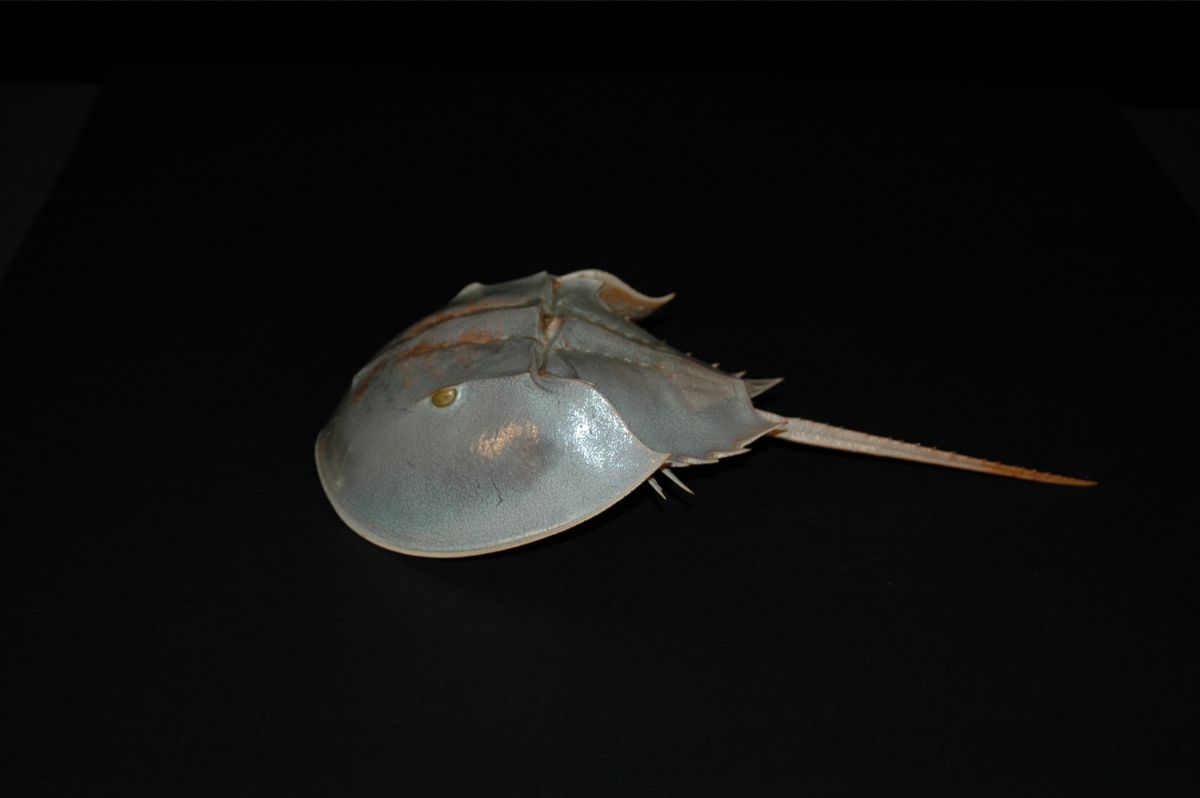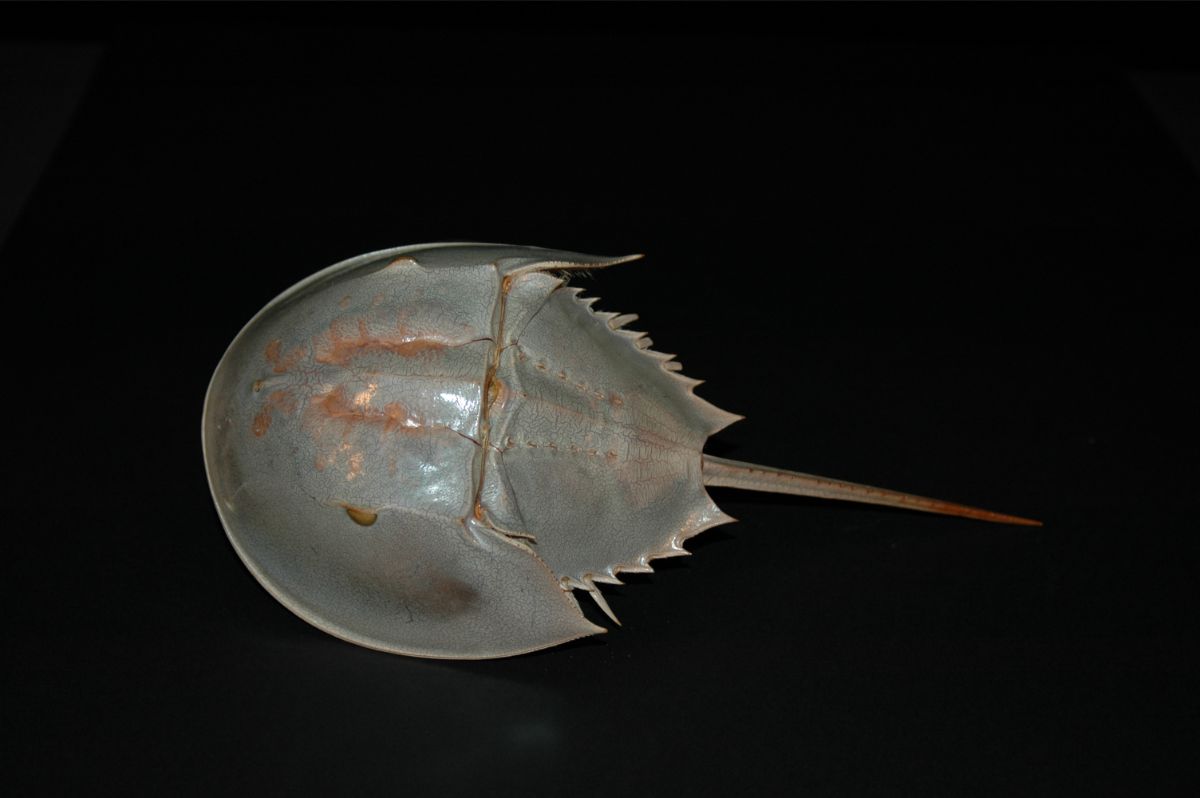Name
Limulus
Atlantic horseshoe crab
Framing
Phylum: Arthropoda
Subphylum: Chelicerata
Class: Merostomata
Order: Xiphosurida
Family: Limulidae
Genus: Limulus
Habitat
Aquatic, marine, benthic (shallow water)
Feeding
Carnivore (benthic invertebrates), scavenger
Distribution
Atlantic coast of North America, Gulf of Mexico
Conservation status
The species is considered as "Vulnerable" (VU) by the IUCN. Their populations have been greatly affected by their fishing and the destruction of their habitat.
Additional information
Animal with a horseshoe-shaped dorsal carapace with three longitudinal ridges, two lateral eyes and two anterior median eyes. It bears a pair of chelicerae ending in pincers, and five pairs of locomotive legs also with pincers, except for the last one. The opisthosoma bears a telson, in the form of a long tail. There is only one species belonging to this genus, Limulus polyphemus. In Southeast Asia there are three other species belonging to the genera Tachypleus (T. gigas, T. tridentatus) and Carcinoscorpius. em> (C. rotundicauda). Fossils of the group are known from about 445 million years ago.
Additional information
Bibliography
- Smith, D.R., Brockmann, H.J., Beekey, M.A., King, T.L., Millard, M.J. & Zaldívar-Rae, J. (2017). Conservation status of the American horseshoe crab (Limulus polyphemus): a regional assessment. Reviews in Fish Biology and Fisheries, 27, 135-175. DOI 10.1007/s11160-016-9461-y
- Smith, D.R., Beekey, M.A., Brockmann, H.J., King, T.L., Millard, M.J. & Zaldívar-Rae, J.A. (2016). Limulus polyphemus. The IUCN Red List of Threatened Species 2016: e.T11987A80159830. Accesible en: https://dx.doi.org/10.2305/IUCN.UK.2016-1.RLTS.T11987A80159830.en.
- Lamsdell, J.C. (2020). The phylogeny and systematics of Xiphosura. PeerJ 8:e10431. doi.org/10.7717/peerj.10431
- Obst, M., Faurby, S., Bussarawit, S. & Funch, P. (2012). Molecular phylogeny of extant horseshoe crabs (Xiphosura, Limulidae) indicates Paleogene diversification of Asian species. Molecular Phylogenetics and Evolution, 62, 21-26. doi:10.1016/j.ympev.2011.08.025
- Rudkin, D., Young, G. & Nowlan, G. (2008). The oldest horseshoe crab: A new xiphosurid from Late Ordovician Konservat-Lagerstatten deposits, Manitoba, Canada. Palaeontology, 51, 1-10. DOI:10.1111/j.1475-4983.2007.00746.x
- Ballesteros, J. and Sharma, P. (2019). A Critical appraisal of the placement of Xiphosura (Chelicerata) with account of known sources of phylogenetic error. Systematic Biology, 68, 896-917. DOI:10.1093/sysbio/syz011





